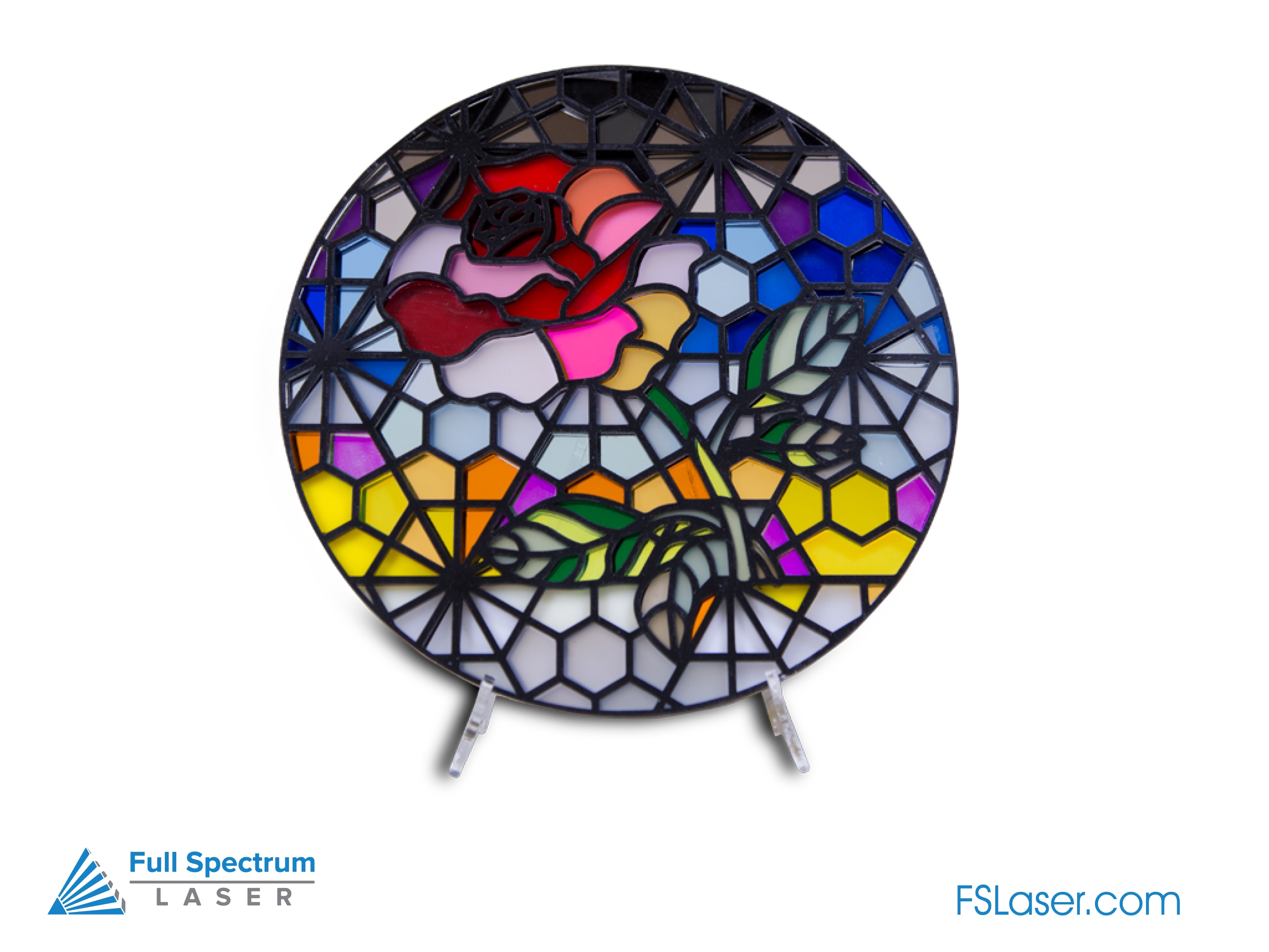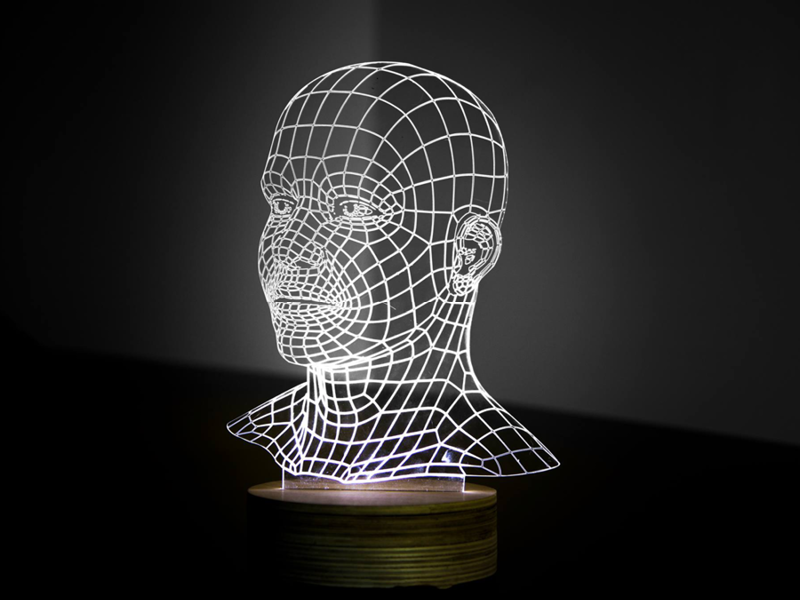This is part of series of blogs I will be posting on materials suitable for laser cutting and engraving. This time we look at acrylic.
Intro
While many plastics are banned from laser cutting, acrylic is approved safe and works wonderfully under a laser.
Acrylic Properties
Origins: Acrylic (Polymethyl-Methacrylate or PMMA) is a thermoplastic which is produced in a wide range of colors and degrees of transparency. Whereas many plastics are banned from laser cutting, acrylic is generally safe.
Rigid: High impact strength
Durable: High weatherability
Quality Manufacturing: There are acrylics made for laser cutters that are of high quality and readily available. Rowmark acrylics are recommended.
Cast Acrylic: Best for engravings as it leaves a smooth, shiny edge on vector cuts, a distinct “frosty” look with engravings and has great optical qualities. On the down side, cast acrylic can be uneven and it is more expensive than extruded acrylic.
Extruded Acrylic: Cheaper than cast acrylic, with no change in engraving color. In addition, because of the way it is manufactured, extruded acrylic is much more consistent in thickness and flatness.
Brands of PMMA: There are various proprietary brands of PMMA. Before using any of these brands, check with the manufacturer or consult the MSDS. Some may contain additives that are not safe for laser cutting. We can recommend all Rowmark acrylic as safe for laser cutting.
Acrylic Applications
Fumes: While not lethally toxic, as with PVC, acrylic vapor can still give off unpleasant odors and irritate the lungs. Always use an appropriate exhaust system.
Film Covering: Acrylic often comes with thin film protecting the acrylic. This should be removed in most cases, however, some leave the film on to protect the bottom of the piece while it is in the laser cutter, when rastering.
Lasers and Acrylic
General Approach
As with wood, we want our acrylic to be as flat as possible, especially if we are going to assemble a box or other 3D project with slotting. Because material can vary in thickness, we recommend using calipers to get a precise measurement. Also, be aware that acrylic can produce smelly fumes, though they are deemed safe for laser operators with proper exhaust systems in place.
Cutting Acrylic
Cutting acrylic is pretty straight forward. Like wood it will create a contrast on the edges.
Engraving Acrylic
Settings can have a lot of effect on outcome. Results can range from a slightly sparkly (low power) to a thicker frosty look (more power and depth). Acrylic can also be purchased with layers that when rastered, reveal a second color, creating vivid color combinations.
Marking Acrylic
Marked acrylic is high detail and works well with slower speed settings.
Acrylic Finishing Tips
Cleaning: Use only a non-abrasive cloth, such as a microfiber cloth. Press lightly and use a mild soap and water mixture if needed. Avoid cleaning chemicals such as ammonia or solvents as this can cause micro-fracturing or shattering.
Your power, speed and other laser settings are going to vary depending on things such as thickness of the acrylic you are cutting. Even the wattage of your laser and the local environment can affect settings. Because of this, instead of giving arbitrary settings, we recommend doing a materials test on a piece of scrap acrylic or in an unused corner of your project material. You can download our Material Test and log book at our Laser 101 website.
If you enjoyed this blog, be sure explore our other laser related offerings such as ebooks, video tutorials and our weekly live shows, all free to Full Spectrum Laser owners and operators.










.png?width=410&name=Muse-Accessories-FSL200(web).png)


